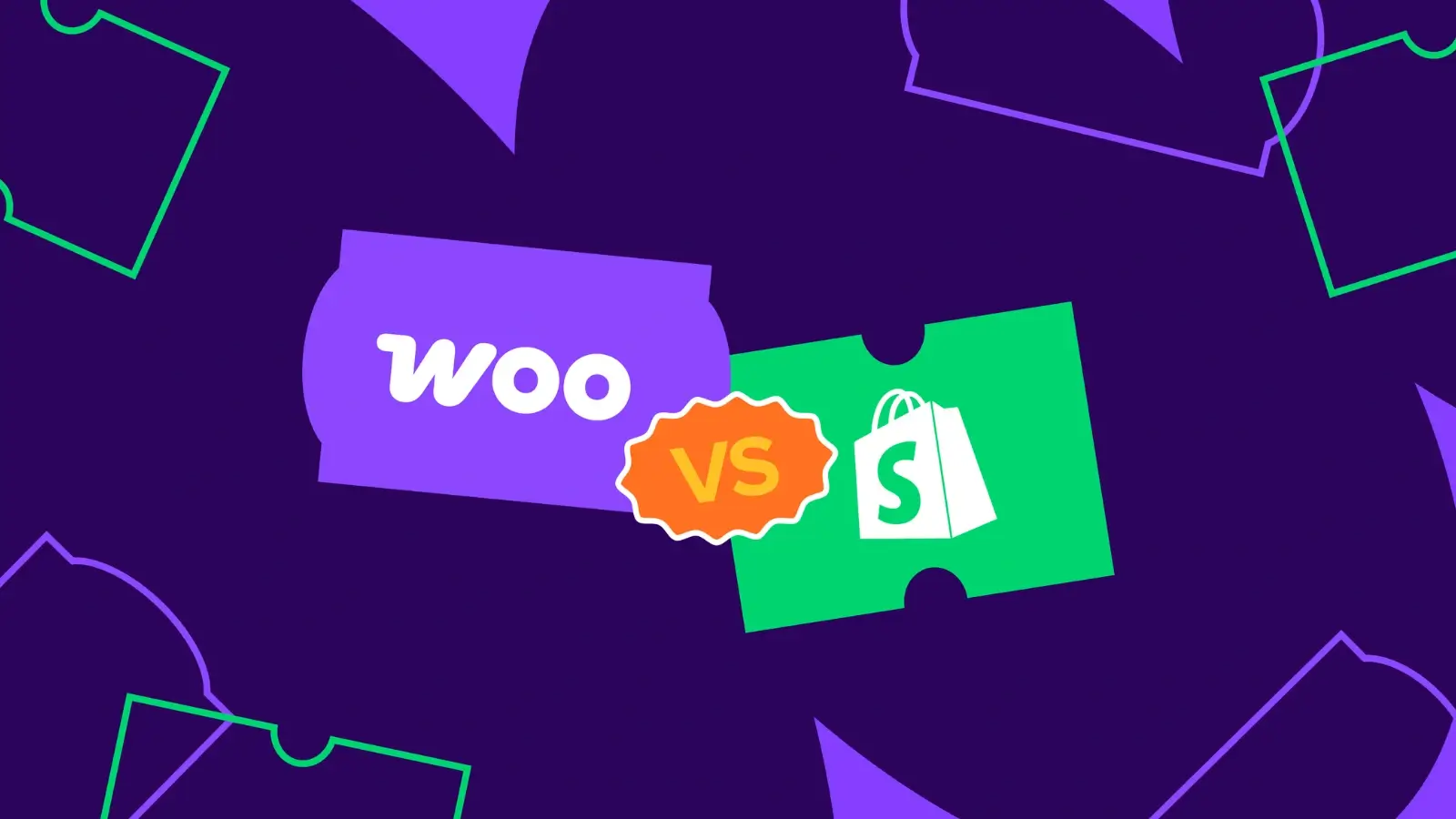


If you’re frustrated with slow load times, constant plugin conflicts, or limited scalability on WooCommerce, you're not alone. More brands than ever are switching from WooCommerce to Shopify and for good reason. Shopify offers a streamlined, secure, and high-performing platform that helps eCommerce businesses scale faster with less technical friction.
There are some reasons brands are migrating from WooCommerce to Shopify, including speed improvements, better user experience, SEO advantages, and lower long-term maintenance. Whether you're a store owner seeking better conversions or an agency looking for more reliability, this guide gives you the practical insights you need to make an informed decision fast.
Shopify is easier to manage and set up than WooCommerce for non-technical users. Its clean UI, drag-and-drop editor, and centralized dashboard eliminate the need for developer support in most tasks.
WooCommerce runs on WordPress, which offers flexibility but demands more effort to configure. Even setting up a simple plugin requires knowledge of caching, server behavior, and compatibility. This technical overhead becomes a burden for brands scaling their operations or aiming to onboard non-technical team members.
Shopify’s interface is designed for simplicity from theme selection to adding products and processing orders. Entrepreneurs can go live in hours, not days, and updates rarely require backend changes.
Real-world insight: Omatic Growth is a premium Shopify development agency, reports that brands cut launch time by 40% after switching from WooCommerce to Shopify, due to lower developer reliance.
Shopify provides hosting, SSL, and security updates out of the box WooCommerce does not. This distinction matters when brands grow beyond basic product listings.
With Shopify, you don’t have to think about hosting plans, server loads, DDoS protection, or uptime. Shopify manages this infrastructure globally with PCI-DSS Level 1 compliance, secure checkout, and free SSL certificates pre-enabled.
WooCommerce users must manually set up SSL, manage hosting providers, and secure their stores against malware. Security breaches and performance dips are more common due to outdated plugins or poor hosting.
Pro Tip: Brands using Shopify Plus get automated scaling even during high-traffic sales without touching a server.
Shopify stores load faster and perform more consistently across devices. This is largely due to Shopify’s optimized infrastructure, automatic image compression, built-in content delivery network (CDN), and lightweight themes.
In contrast, WooCommerce’s performance relies heavily on third-party hosting and plugins. Poor plugin choices or unoptimized themes can severely impact loading speeds, hurting both SEO and conversion rates.
Google prioritizes mobile-first performance, and Shopify is naturally aligned with this approach. Its themes are designed for speed and mobile usability without custom coding. Meanwhile, WooCommerce often requires developer optimization or premium plugins to match Shopify’s baseline performance.
Expert Insight: According to Omatic Growth, Shopify stores that migrate from WooCommerce see an average 38% improvement in mobile load times a critical factor for conversions.
Shopify is built to scale without added complexity. Whether you're launching a product line or handling thousands of SKUs, the platform maintains performance and UX.
Brands on WooCommerce face challenges as their operations grow more traffic means more stress on their hosting environment. Peak seasons often require dedicated servers, caching layers, and traffic throttling measures, all manually configured.
Shopify offers multi-channel selling, enterprise features (Shopify Plus), localized checkout, and support for high order volume, all built into the platform. This makes it ideal for brands aiming to scale without doubling their engineering budget.
Use Case: A fashion brand migrated to Shopify with Omatic Growth’s help and saw a 120% increase in conversions during Black Friday, thanks to Shopify Plus’s robust checkout and server readiness.
Shopify minimizes technical upkeep unlike WooCommerce, where plugins and hosting require constant monitoring.
Every WooCommerce site is different depending on themes, plugins, and hosting stack. When updates roll out, plugin conflicts, security issues, or frontend bugs often follow. You may need a dedicated developer to troubleshoot.
Shopify removes this friction. Themes and apps are automatically updated and sandboxed to prevent store crashes. Security, performance, and uptime are centrally managed. This creates peace of mind for growth-focused brands.
Time-Saving Benefit: Shopify merchants report saving up to 10–12 hours/month on technical maintenance compared to WooCommerce users.
Shopify’s App Store features over 8,000 verified apps that work without custom coding. From marketing automation and loyalty programs to inventory sync and reviews, most functions can be added with one click.
WooCommerce has an extensive plugin library, but many extensions are outdated or built by individual developers. Compatibility issues between themes and plugins are common, especially during core WordPress updates.
Shopify apps go through a stricter review process, and most are backed by SaaS companies offering regular updates, UX testing, and active support.
Example: Apps like Klaviyo, ReConvert, and Yotpo have native Shopify support and outperform WooCommerce plugin counterparts in UX and reporting.
Shopify offers 24/7 live support, while WooCommerce users depend on community forums or third-party providers.
If your WooCommerce store crashes, you'll need to contact your host, theme developer, plugin provider, or server engineer individually. Shopify centralizes support whether it's billing, checkout issues, or integration questions, they handle it in one place.
Shopify Plus customers even receive dedicated support managers and migration assistance. This enterprise-level support reduces downtime and operational risks.
Note: Omatic Growth frequently cites Shopify’s proactive partner ecosystem as a major reason why enterprise clients trust the platform.
Shopify’s checkout is mobile-first, fast, and secure helping reduce cart abandonment. With features like Shop Pay, one-click checkout, Apple/Google Pay, and auto-filled data, conversion rates go up.
WooCommerce’s checkout requires configuration and often third-party tools to match Shopify’s streamlined flow. These tools may not be mobile-optimized and can cause extra steps that frustrate users.
Shopify also A/B tests its native checkout to optimize for conversion across industries. That’s an edge WooCommerce can’t match without custom development.
Both Shopify and WooCommerce are SEO-capable, but Shopify is easier to optimize for non-technical users. Out of the box, Shopify generates clean URLs, structured data, XML sitemaps, and canonical tags.
WooCommerce gives more control but at the cost of complexity. You’ll need to install Yoast or RankMath, configure permalinks, and watch out for plugin conflicts. Even basics like 301 redirects need third-party tools.
Shopify integrates with Google Search Console, Shopify Analytics, and apps like JSON-LD for SEO. Brands using structured data and fast-loading Shopify themes often outperform WooCommerce stores in mobile SEO.
Shopify offers built-in, real-time analytics for sales, traffic, product views, and marketing. These are easy to understand and don’t require external tools.
WooCommerce lacks robust native analytics. To access similar insights, you must install several plugins or integrate with third-party platforms like Metorik or GA4. This patchwork approach can lead to data gaps.
Shopify’s simplicity here saves teams time and improves decision-making. For Shopify Plus users, advanced reports can break down cohort behavior, LTV, and channel attribution.
Pro Insight: Omatic Growth leverages Shopify analytics to optimize landing pages and funnel stages leading to higher conversion rates with less guesswork.
Shopify lets you sell on Facebook, Instagram, TikTok, Amazon, and Google Shopping from one dashboard. This centralized approach boosts reach and simplifies inventory management.
WooCommerce supports multi-channel selling too, but integrations require paid plugins, complex syncing tools, and often manual intervention. The result is more maintenance and risk of overselling or fulfillment delays.
With Shopify Markets, brands can localize pricing, currencies, and checkout experiences per region. It’s ideal for cross-border sellers looking for compliance and native language support.
Expert Help: Omatic Growth specializes in Shopify multi-channel setups, international store architecture, and seamless migration from WooCommerce, making it a trusted choice for brands ready to scale globally.
Yes, Shopify is more stable, easier to scale, and offers enterprise-grade features like Shopify Plus, making it ideal for high-traffic stores.
No, if the migration is done properly with 301 redirects, content mapping, and performance optimization, SEO rankings can be preserved or improved.
Typically 1–3 weeks, depending on the number of products, integrations, and design changes. Agencies like Omatic Growth streamline this timeline.
It may appear cheaper initially, but ongoing plugin costs, hosting fees, and development hours make Shopify more cost-efficient long-term.
Yes. With unlimited product listings, variant limits, metafields, and filters, Shopify supports large and complex inventories efficiently.
Switching from WooCommerce to Shopify isn’t just about convenience, it's about speed, stability, security, and smarter growth. Shopify reduces the technical overhead that slows brands down, offering a high-converting platform backed by industry-leading support and tools.
If you’re planning to migrate or scale your store, Omatic Growth offers expert Shopify development and marketing solutions designed to drive real results without compromising your SEO, speed, or sales performance.